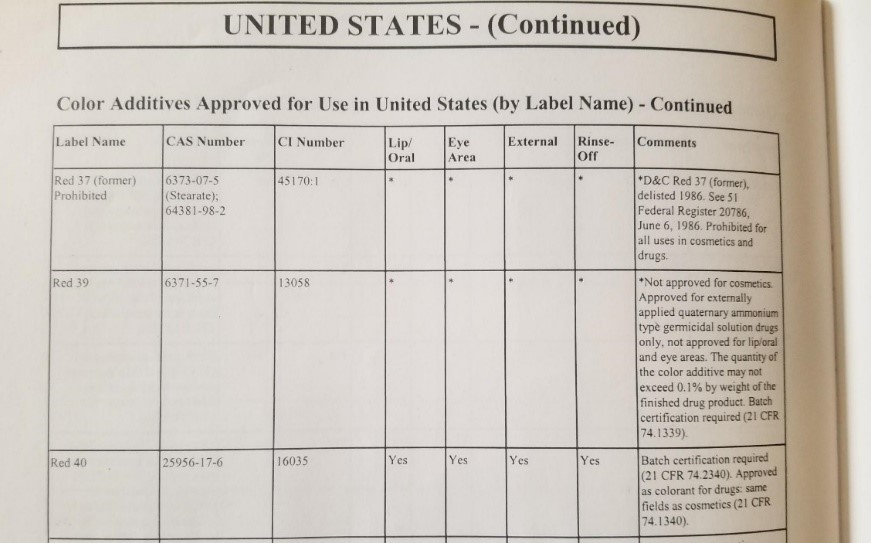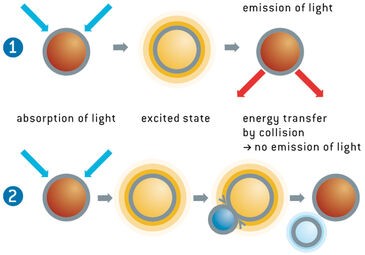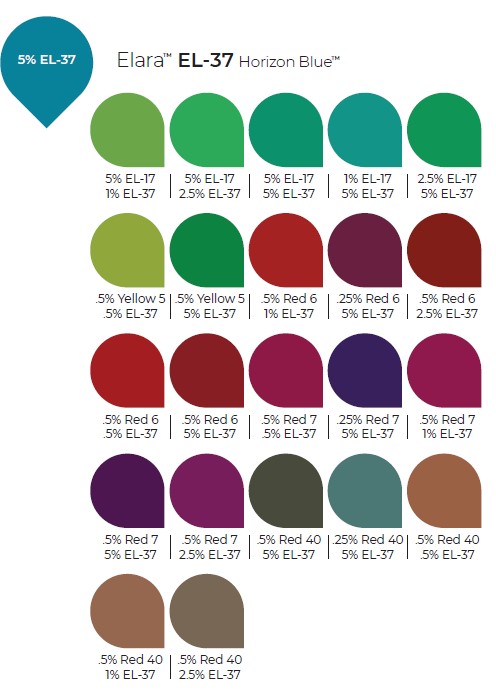Elara enhances colors in fun and fabulous ways
Cosmetic Color Background:
If your goal is to be unique, the amount of colors available to personalize and accentuate your uniqueness seems limitless. Thousands of shades and hues ranging from blindingly brilliant to daringly dark with everything in-between, can make choosing how to present your unique flair to the world a daunting task. While you may be struggling to figure out exactly what color you want for eyeshadow, lipstick or nail-polish, reading a bit about everything that goes into making these amazing products may help put your mind at ease. After all, you can look as fabulous as you like, but if it comes at the cost of health and safety, that look that is “to die for” may become too literal for your liking.
For understanding which pigments and dyes are permitted in various cosmetics, at which concentrations and if there are any special restrictions, the CFR (Code of Federal Regulations) is the governing literature to consult. Specifically, title 21 CFR parts, 73 and 74 (Subpart C) contains all approved cosmetic colorants and those subject to certification. Certification is covered in part 80 of the same CFR, with the most important aspect being the traceability of the colorant from conception all the way through the manufacturing process. This makes it easier for consumers as well as everyone in the manufacturing process to know exactly what is going into their products. All certified color additives are subject to restrictions prescribed in part 70 and 71. A sample excerpt of the CFR that describes the commonly used dye Red No 40 can be seen below, to illustrate how much goes into identifying, restricting, labeling and certifying each color.
Sec. 74.2340 FD&C Red No. 40.
(a) Identity and specifications. (1) The color additive FD&C Red No. 40 shall conform in identity and specifications to the requirements of § 74.340(a)(1) and (b) of this chapter. (2) The listing of this color additive includes lakes prepared as described in §§ 82.51 and 82.1051 of this chapter, except that the color additive used is FD&C Red No. 40 and the resultant lakes meet the specification and labeling requirements prescribed by § 82.51 or § 82.1051 of this chapter. (b) Uses and restrictions. FD&C Red No. 40 may be safely used in coloring cosmetics generally, except that only FD&C Red No. 40 and FD&C Red No. 40 Aluminum Lake may be safely used in coloring cosmetics intended for use in the area of the eye. These uses are subject to the following restrictions: (1) The color additive may be used in amounts consistent with current good manufacturing practice. (2) The color additive shall not be exposed to oxidizing or reducing agents that may affect the integrity of the color additives or any other condition that may affect their integrity. (c) Labeling. The label of the color additive shall conform to the requirements of § 70.25 of this chapter. (d) Certification. All batches of FD&C Red No. 40 shall be certified in accordance with regulations in part 80 of this chapter. [42 FR 15654, Mar. 22, 1977, as amended at 59 FR 7636, Feb. 16, 1994]
As one can see, the verbiage may be difficult for the average person to understand and even if one can, these regulatory determinations only pertain to products in America. Luckily, there are other sources one can consult that provide easier to understand vocabulary as well as restrictions based on geographical locations. One such source is the International Color Handbook provided by the PCPC (Personal Care Products Council). Below is a sample excerpt showcasing the ease at which useful information can be gleaned from the text. Red 40 can clearly be seen to be acceptable for use in all cosmetics including the eye area (which has fewer approved options than lip/oral cosmetics).

A link has been provided listing the CFR permitted colors in an easier to read style, like the excerpt above. https://www.fda.gov/cosmetics/cosmetic-ingredient-names/color-additives-permitted-use-cosmetics
Now that you understand a little bit more about how it is determined which colors can go into which cosmetics, the next important factor to discuss is relative strength of conventional pigments compared to fluorescent pigment. While fluorescent pigments can reach up to 300% reflection of color, leading to them being widely known as intensely bright, vivid colors they unfortunately are easily overpowered, or rather have their effectiveness reduced by conventional pigment. The mechanism through which this occurs can be more easily understood by visualizing each fluorescent molecule as a person during quarantine. This person in order to stay bright and vibrant needs to keep at least 6 feet of from other people. Start adding more and more people, or more pigment molecules, whether fluorescent or conventional and the ability to reflect light at above 100% decreases substantially. This process is known as quenching and occurs due to molecular interactions between the fluorescent molecule and its surroundings. Anything from excited-state reactions, molecular rearrangements, energy transfer, ground-state complex formation and collisions between molecules can cause quenching, but we are primarily focusing on the collision-based aspect. Below is a simple diagram showcasing how quenching occurs through molecular interaction, by showing two different interactions. The first being one with no collision that allows for normal emission to occur, the second being one where a collision with another molecule occurs, causing the emission to no longer occur due to energy transfer.

The good news though, is that just because it can quench the fluorescence does not mean that the color is lost. There are numerous interesting blends that can be created through various combinations of fluorescent and conventional pigment, that simply cannot be created with conventional pigment alone.

Something interesting from a regulatory standpoint is any colors made using Elara-37 blue and conventional Red-40 can be used on any part of the body including under the eye. This may not sound that impressive at first, but when you realize there are only 4 FDA approved organic colors for use in that area, it adds invaluable potential for new and interesting, but most importantly safe and approved colors. The amount of maroon, burgundy and darker, semi-gray shades are also perfect eye shadow colors.
Elara is known for vibrant color so it may be a bit shocking to see some of the darker earth tones that can be created by simply adding a small amount of conventional pigment. Important to note is the ratio of fluorescent to conventional pigment, because it is the determining factor for the shade. Typically, a ratio range of 1:1 to 1:5 conventional to fluorescent is not enough to make a visible difference, unless the conventional pigment is a lighter color like yellow. However, it is still enough to lighten, darken and create a shift in color unique enough to warrant a double take. For darker colors like ultramarine blue and ferric ammonium ferrocyanide (sometimes referred to as Prussian blue), a ratio of 1:50 or higher may be needed because of how dark and overpowering the color is. The greatest part is that all the sample palettes you see using Elara blends with conventional pigments are simply a starting point to showcase the range of colors and shades possible. Even more interesting combinations have yet to be made and the possibilities are literally infinite.
